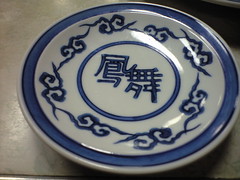Traditional Arts and Crafts-Ceramic Ware
Ceramic Ware
From the fact that Japan’s prehistoric are referred to by the name of the earthenware of the time, such as the Jomon or Yayoi period, it can be seen that Japan has a long tradition of ceramics. In the fifth and sixth centuries, Japanese artistic ware greatly influenced by the introduction of techniques from Korea and China and by visits of skilled craftsmen from these countries. After this period of foreign influence had ended, the art began to follow its own unique of development.

In Japan, ceramic ware is referred to as seto-mono, because the area around Seto City in the Chubu region is famous for this ware. This area has been producing fine ceramic ware since the thirteenth century. Karatsu in Kyushu is also famous for its ceramics. It is said that the very fine ceramic ware produced was introduced by potters who came from Korea in the sixteenth century.
Other representative artistic pottery of the present day include kyoyaki, rakuyaki, shinoyaki and oribeyaki,
Typical chinawares (porcelain) include aritayaki, kiyomizuyaki and kutaniyaki.
As there is a plentiful supply of the right materials, at the traditional kilns in each district highly skilled ceramic artists create countless beautiful pieces.
【日本語訳】
陶磁器
日本の先史時代の呼称を縄文時代、弥生時代などその当時の土器の名称で表しているように、日本の陶磁器の伝統は長い。芸術品としての陶磁器は、5~6世紀ごろ朝鮮、中国から技術の導入、技術者の渡来によって大きな影響を受けたのち、独特の発展と遂げた。
日本では、陶磁器のことを瀬戸物というが、これは中部地方の瀬戸市付近が有名な産地であったからである。この地域では、13世紀から優れた陶磁器がつくられた。九州の唐津も陶磁器の産地として有名である。16世紀に朝鮮から来た陶工によって、すぐれた陶磁器がつくられたという。このほか、現在芸術的な意味での日本の陶器の代表的なものとしては、有田焼・清水焼・九谷焼などがある。原料の土に恵まれているため、各地にある伝統的な窯場ですぐれた陶芸家が立派な陶芸品を多くうみ出している。
